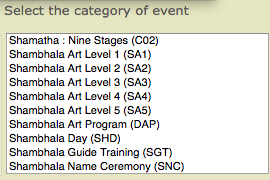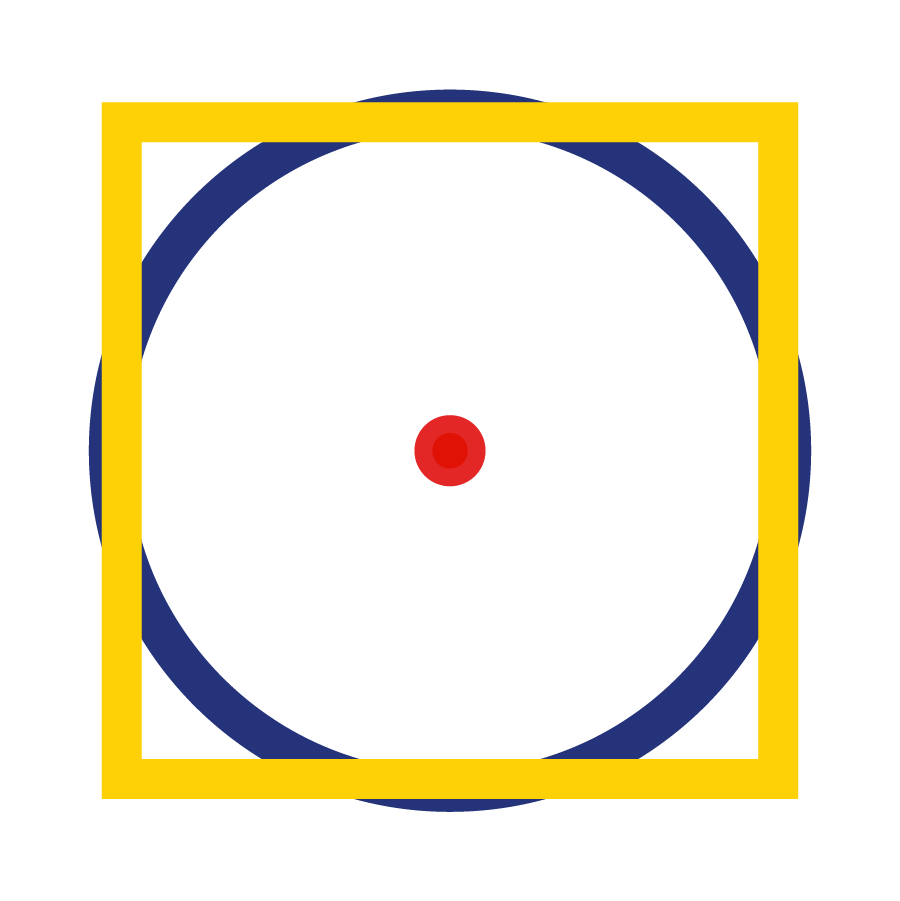
For Shambhala Groups and Centers
Resources for Groups and Centers
“The Vidyadhara’s inquisitiveness and love of the great variety of artistic expressions, and his respect for the power of art to awaken and liberate, were unbounded. For that reason, he emphasized the teachings of dharma art for all his students—artists and nonartists alike. ”
Interested in hosting Shambhala Art programs for your group or urban/land center? This set of resources will help you get started.
Getting Started
Shambhala Art programming provides an opportunity for all people to appreciate, deepen, and practice the view of "art in everyday life" and "everyday life as art." Like the secular Shambhala path, the Shambhala Art curriculum does not presume an understanding of (or even interest in) Buddhism or Buddhist (or Shambhala) terminology. The curriculum also reinforces the idea of "more like life, less like school" — each part consists of several exercises that contribute to a direct experience of that part's themes. Finally, because Shambhala Art does not teach a particular artistic practice or focus on the production of artistic or creative work, it is accessible to non-artists and artists.
Types of Shambhala Art Programming
Programming draws from the core set of Shambhala Art teachings, and can take a variety of forms. Examples of Shambhala Art programming include:
A talk on a particular topic, usually drawn from source material in True Perception or The Collected Works of Chogyam Trungpa, Volume 7;
A group outing to a local museum or location, where participants engage viewing from a Shambhala Art perspective;
A book or video study group lead by a Shambhala Art teacher, usually drawing from the source materials listed under Resources;
Shambhala Art Part I, presented either as a one or two day program;
Integration of Shambhala Art into another Shambhala program (e.g. Way of Shambhala training, weekthün, etc.); or
A full intensive of all five parts of the training program.
We have ordered the list of programming ideas based on our own experience. Beginning with a talk or outing led by a Shambhala Art educator is a great way to introduce your community to Shambhala Art programming. While we are gratified by the enthusiasm of our teachers and our Shambhala groups and centers, we have discovered after 20 years of offering Shambhala programs that it is better to begin small and to grow from there. Also, there is increasing cost and other resources associated with offering larger or longer programs—a fact that many groups and centers need to consider when planning programs.
It is important to state that holding a class or program on a particular artistic discipline — painting, calligraphy, dance, etc. — is not the same as a Shambhala Art program. While people can teach these disciplines from the ground or view of Shambhala Art principles, Shambhala Art itself is not limited to any one form of expression.
Locating an Educator
Location of Shambhala Art teachers (as of 9/9/2018)
The Shambhala Art educator mandala is a small group compared to the larger teaching community in the Shambhala mandala. The provided map gives a visual context for the location of our teachers. Our educator directory provides the name, authorization level, home city, and email address for all our active educators. If you are located in a city without a Shambhala Art educator (highly likely!), we recommend either contacting an educator who is close to you geographically or reaching out to our administrative team.
Once you have located an educator, please communicate with them about your interest and ideas; Shambhala Art does not centrally coordinate programs, and educators are always free to reach out to the administrative team to discuss programming.
Understanding our Authorization Model
Shambhala Art has three levels of authorization for educators: Assistant, Part 1 - 3, and Part 1 - 5. A description of what each of these levels can facilitate is provided under our Educator Training page. To summarize, Assistant Educators can provide programs such as leading book or video studies, or outings. They can also be integrally involved with the planning and execution of a Shambhala Art Day celebration. They may not teach Parts 1 - 5 except as a co-teacher to an authorized Part 1 - 3 or Part 1 - 5 teacher.
Offering Parts 1 - 5
Once you have or have built up interest in a Shambhala Art programming, you may wish to offer a Shambhala Art training. Because of our decentralized model, the exact way in which you offer this training should be a discussion between you and a Shambhala Art educator. However, we offer the following guidelines here that we have also shared with our educators.
Co-Teaching Requirement for Parts 1 - 5
For Parts 1 - 5, Shambhala Art requires that two educators present the material. Teaching a part without a co-presenter is by exception only, and is usually done when either geography or cost makes it prohibitive to have a co-presenter. It is our expectation that Shambhala Art educators will contact Steve or Anne Saitzyk to discuss the situation and to request an exception. Co-presenters are not required for other types of programs (e.g. a talk or book discussion, or where a Shambhala Art educator is paired with another Shambhala-authorized educator). A co-presenter for Parts 1 - 3 can be an authorized Assistant Educator, and a co-presenter for Parts 4 - 5 can be an authorized Parts 1 - 3 educator; it is our expectation that Shambhala Art educators will maintain this standard.
Offering the Parts Together (Non-Intensive Format)
In general, each part of the Shambhala Art training program can be offered as a standalone, two-day program. From this baseline, the following scheduling variations have all worked successfully in the past.
Offering Part 1 as a one day program entitled “What is Shambhala Art?”
Offering Part 1 and 2 together on the same weekend (one day each)
Offering Part 4 and 5 together on the same weekend (one day each)
Offering a night-before-talk that is open to the public (with or without an experiential exercise)
Each part is a prerequisite for the previous part; this can be important to keep in mind when offering more than one part in a single weekend (e.g. Part 1 on a Saturday, Part 2 on a Sunday). Please note that Part 3 is always offered as its own weekend — this is due to the content of the training and the types of exercises that are included.
Program Finances: Educators and Shambhala Art
We have provided guidelines to educators regarding payment for teaching a program. We also provide them here to ensure a shared starting point and transparency on our advice to educators:
Shambhala Art Teachers, whenever possible, should receive compensation for teaching. The suggested minimums are $125 for a one-day program, $250 for two-day, $325 for two days plus Friday night. For out of town expenses, the program should pay for all travel and lodging, and the instructor should be either reimbursed for food or receives a per diem of at least $35. Whenever possible Assistant Teachers should receive at least a per diem and a teacher honorarium of $50.
While Shambhala Art is legally a part of Shambhala, we do not receive any funding from Shambhala, the Sakyong Potrang, or any other Shambhala-related entity. In order to meet our (very low) operational expenses, we ask that groups or centers forward 10% of net revenue to Shambhala Art. If you have questions about this offering, please do not hesitate to reach out to us. The mailing address for the 10% offering is:
Shambhala Art
12610 Walsh Ave.
Los Angeles, CA 90066
Other Notes and Resources
Note on Scheduling in the Shambhala Database
The Shambhala Database has separate codes for Shambhala Art Part 1 - 5 programs (SA1 - SA5, respectively). When scheduling two parts in a weekend under one entry, please use the code associated with the highest level (e.g. Shambhala Art Part 1 and 2 should use the SA2 code). There is also a generic code Shambhala Art Program (DAP); please do not use this code for weekend/non-intensive programs. Following these guidelines will greatly help us with our own tracking of programs.
Marketing Your Program
Please feel free to use the resources provided at the bottom of this page in your marketing for an authorized Shambhala Art program taught by an authorized educator. In order to protect and preserve the integrity of Shambhala Art’s copyright, please do not edit or change the logo in anyway, or use it for programs other than Shambhala Art programs.






